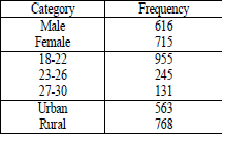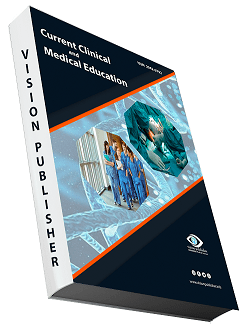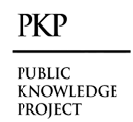The Most Important Influences That Reduce the Demand of Students of The Technical Institute of Babylon From Immunization Against The Corona Virus
Keywords:
Students, Technical Institute Of Babylon, Corona VirusAbstract
The world witnessed a great disaster, after the World Health Organization announced on March 11, 2020 an outbreak of the Corona epidemic in the world, as a result of which life was disrupted in general, and all mankind was confined to their homes for fear of contracting this global epidemic, at that time there was no medicine or A vaccine can limit the spread or infection of this disease. In order to get rid of this epidemic, international pharmaceutical companies have adopted the discovery of an effective vaccine free of side effects, which is the key to survival, so that life can be restored to humanity again. After the availability of vaccines of all kinds, and it became possible for anyone to obtain them for free, a new problem arose, which is that many members of society did not accept the idea of vaccination for reasons that were raised and promoted among the different segments of society, until the vaccination centers in the Iraqi Ministry of Health became empty of visitors. This is what the current study dealt with by conducting an electronic questionnaire through the Google Form program for a segment of the students of the Technical Institute of Babylon affiliated with Al-Furat Al-Awsat Technical University for the year 2021, as the results showed that 65.7% of the students of the Technical Institute of Babylon refused to take the vaccine, while the remaining percentage was 34.3 % took the vaccine. The results were explained by the fact that social networks and the beliefs that were spread at the time caused students to refuse immunization.
Downloads
References
- Roeder P, Mariner J, Kock R. Rinderpest: the veterinary perspective on eradication. Philos. Trans. R. Soc. Lond. B Biol. Sci.2013; 368( 1623): 20120139 .
- Zhou P, Shi ZL. SARS-CoV-2 spillover events. Science 2021;371: 120–122.
- Bosco-Lauth AM, et al. Experimental infection of domestic dogs and cats with SARS-CoV-2: Pathogenesis, transmission, and response to reexposure in cats. Proc. Natl. Acad. Sci. U.S.A. 2020; 117: 26382–26388.
- Shereen MA, Khan S, Kazmi A, Bashir N, Siddique R. COVID-19 infection: Origin, transmission, and characteristics of human coronaviruses. J. Adv. Res. 2020;24: 91–98 .
- Cowley JA, Dimmock CM, Spann KM, Walker PJ. Gill-associated virus of Penaeus monodon prawns: an invertebrate virus with ORF1a and ORF1b genes related to arteri- and coronaviruses. J. Gen. Virol. 2000; 81:1473-1484.
- Fan Y, Zhao K, Shi ZL, Zhou P. "Bat Coronaviruses in China". Viruses(March 2019 ; 11 (3): 210.
- de Groot RJ, Baker SC, Baric R, Enjuanes L, Gorbalenya AE, Holmes KV, et al. "Family Coronaviridae". Dalam King AM, Lefkowitz E, Adams MJ, Carstens EB, International Committee on Taxonomy of Viruses, International Union of Microbiological Societies. Virology Division. Ninth Report of the International Committee on Taxonomy of Viruses. Oxford: Elsevier. 2011. hlm. 806–828. ISBN 978-0-12-384684-6.
- Cherry J, Demmler-Harrison GJ, Kaplan SL, Steinbach WJ, Hotez PJ. Feigin and Cherry's Textbook of Pediatric Infectious Diseases. Elsevier Health Sciences. 2017;p. PT6615.
- Sexton NR, Smith EC, Blanc H, Vignuzzi M, Peersen OB, Denison MR. "Homology-Based Identification of a Mutation in the Coronavirus RNA-Dependent RNA Polymerase That Confers Resistance to Multiple Mutagens". Journal of Virology. Agustus 2016;90 (16): 7415–7428.
- Woo PC, Huang Y, Lau SK, Yuen KY. "Coronavirus genomics and bioinformatics analysis". Viruses. August 2010; 2 (8): 1804–1820.
- Almeida JD, Berry DM, Cunningham CH, Hamre D, Hofstad MS, Mallucci L, et al. "Virology: Coronaviruses". Nature. November 1968; 220 (5168): 650.
- Pal M, Berhanu G, Desalegn C, et al. Severe acute respiratory syndrome coronavirus-2 (SARS-CoV-2): an update. Cureus. 2020;12(3) :e7423.
- Reiter PL, Pennell ML, Katz ML. Acceptability of a COVID-19 vaccine among adults in the United States: how many people would get vaccinated? Vaccine. 2020;38:6500–6507.
- Huang C, Wang Y, Li X, et al. Clinical features of patients infected with 2019 novel coronavirus in Wuhan, China. Lancet 2020 Jan 24; pii: S0140-6736(20)30183-5.
- Song F, Shi N, Shan F, et al. Emerging coronavirus 2019-nCoV pneumonia. Radiology. 2020;200274.
- Mohan BS, Nambiar V. COVID-19: An Insight into SARS-CoV-2 Pandemic Originated at Wuhan City in Hubei Province of China, Infectious Diseases and Epidemiology ,2020; 6 ( 4): 1-8.
- World Health Organization Director-General's remarks at the media briefing on 2019-nCoV on 11 February 2020.
- Pan A, Liu L, Wang C, Guo H, Hao X, Wang Q, et al. Association of public health interventions with the epidemiology of the COVID-19 outbreak in Wuhan, China. JAMA. 2020; 323:1915–1923.
- Durmaz N, Hengirmen E. The dramatic increase in anti-vaccine discourses during the COVID-19 pandemic: a social network analysis of Twitter. Hum Vaccin Immunother. 2022;18(1): 2025008.
- Bloom DE, Cadarette D, Ferranna M. The Societal Value of Vaccination in the Age of COVID-19 . Am J Public Health. 2021 June; 111(6): 1049–1054.
- Emanuel EJ, Buchanan A, Chan SY, Fabre C, Halliday D, Heath J,et al..What are the obligations of pharmaceutical companies in a global health emergency? Lancet. 2021 11-17 September; 398(10304): 1015–1020. Published online 2021 Aug 6.
- Nguyen KH, Srivastav A, Razzaghi H, et al. COVID-19 Vaccination Intent, Perceptions, and Reasons for Not Vaccinating Among Groups Prioritized for Early Vaccination. MMWR Morb Mortal Wkly Rep. 2021;70:217–22.
- Othman SS, Alsuwaidi A, Aseel R, Alotaibi R, Bablgoom R , Alsulami G, et al. Association between social media use and the acceptance of COVID-19 vaccination among the general population in Saudi Arabia – a cross-sectional study. BMC Public Health. 2022; 22: 375 .
- Coomes EA, Haghbayan H, Finken LR, Quadros KK, Bagai A, Cheema AN. Information on cardiovascular disease in the digital era: results from a cross-sectional patient survey. Can J Cardiol. 2019;35(6):791–794.
- Gunaratne K, Haghbayan H, Coomes EA. Tweeting authors: impact on research publicity and downstream citations. J Gen Intern Med. 2020;35(6):1926–1927.
- Skafle I‚ Nordahl-Hansen A‚ Quintana DS‚ Wynn R‚ Gabarron E. Misinformation About COVID-19 Vaccines on Social Media: Rapid Review., J Med Internet Res.2022; 24 ( 8 ): August .
- Bonnevie E, Gallegos-Jeffrey A, Goldbarg J, Byrd B, Smyser J. Quantifying the rise of vaccine opposition on Twitter during the COVID-19 pandemic. J Commun Healthc. 2021;14(1):12–19.
- Boucher JC, Cornelson K, Benham JL, et al. Analyzing social media to explore the attitudes and behaviors following the announcement of successful COVID-19 vaccine trials: infodemiology study. JMIR Infodemiology. 2021;1(1):e28800.
- Fieselmann J, Annac K, Erdsiek F, Yilmaz-Aslan Y, Brzoska P. What are the reasons for refusing a COVID-19 vaccine? A qualitative analysis of social media in Germany. BMC Public Health 2022; 22, Article number : 846 .
- Soares P, Rocha JV, Moniz M, Gama A, Laires PA, Pedro AR, et al. Factors Associated with COVID-19 Vaccine Hesitancy . Vaccines (Basel).2021; 9(3):300
- Newman PA, Reid L, Tepjan S, Fantus S, Allan K, Nyoni T, Guta A, Williams CC. COVID-19 vaccine hesitancy among marginalized populations in the U.S. and Canada: Protocol for a scoping review. PLoS One. 2022;17(3):e0266120.
- Pappot N, Taarnhøj GA, Pappot H. Telemedicine and e-Health Solutions for COVID-19: Patients' Perspective. Telemed J E Health. 2020 Apr 24:1–3.
- McGowan BS, Wasko M, Vartabedian BS, Miller RS, Freiherr DD, Abdolrasulnia M. Understanding the factors that influence the adoption and meaningful use of social media by physicians to share medical information. J Med Internet Res. 2012 Sep 24;14(5):e117.

Downloads
Published
How to Cite
Issue
Section
License
Copyright (c) 2024 AleemMardasKhudhair Al-Nuaimi, Abbas Razzaq Abed, Ibtisam Mohammed Hussein

This work is licensed under a Creative Commons Attribution 4.0 International License.
Current Clinical and Medical Education













